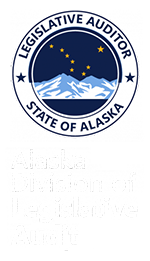| 1.2.3 | Reorientation of the order of information on the budget visualization would improve communication of budget details. |
| 1.2.5 | The use of visual aids in the Governor’s Amended Budget, such as bar graphs and tables, assists readers in comprehending and understanding the information presented. These could be further improved by standardizing the timelines used on these visual elements. |
| 1.2.6 | The presentation of Department challenges and accomplishments in the Governor’s Amended Budget would be improved with a discussion of solutions, as well as an assessment of whether accomplishments meet Department goals. |
| 1.2.7 | The Governor’s Amended Budget could be improved through the inclusion of an introduction and description of programs for each Results Delivery Unit (RDU) that would orient the reader to the detailed information that follows. The inclusion of historical and projection data would also facilitate evaluation of program elements over time. |
| 2.4.1 | Reforming staffing policies and practices at API, including more competitive hiring and retention efforts, could significantly improve the quantity and quality of care without increasing costs. |
| 3.0.3 | The Department should continue to promote greater capacity and utilization of peer support services. |
| 3.0.8 | The Department should develop a Medicaid behavioral health rate structure that covers provider costs, incentivizes quality, and minimizes administrative burden. |
| 4.3.1 | The Department should distinguish more clearly between measures of Division activities and the activities of funded providers. |
| 4.3.2 | The Department should develop a consistent approach to measuring behavioral health performance across divisions. |
| 4.3.3 | The Department should ensure continuity among program, division, and departmental-level evaluation of services, with appropriate degree of specificity and generality. |
| 4.3.4 | The Department should incorporate performance measures that are more appropriately outcome-oriented. |
| 4.3.5 | The Department should incorporate nationally recognized behavioral health treatment and recovery measures into the Department’s performance measurement strategy. |
| 4.3.6 | The Department should align performance measurement of community providers, as far as possible, with measures used in accreditation requirements. |
| 5.5.1 | The Department should implement a consistent and interoperable information technology solution for referrals across the behavioral health continuum of care. |
| 5.5.5 | The Department should provide regional hospitals with a consistent screening tool and mapped interventions for individuals presenting with behavioral health-related emergencies. |
| 5.5.6 | The Department should implement the recommendations presented in the State’s Recidivism Reduction Plan. |
| 6.4.2 | The consolidation of grant and Medicaid review responsibilities can reduce costs and administrative burden on providers, but only if reorganization does not conflict with Medicaid administrative claiming processes or dilute the Department’s regulatory role. |
| 8.3.2 | The Department should prioritize development of interoperability of data for all recipients of behavioral health services, from SDS to DBH to OCS. |
| 8.3.3 | In the near term, the Department should transition all behavioral health providers across the continuum of care to data reporting through AKAIMS. |
| 8.3.4 | The Department should develop clear and consistent priorities for data collection and incorporate these into the Minimum Data Set in AKAIMS. |
| 8.3.5 | The Department should integrate AKAIMS and API data to the greatest extent possible. |
| 8.3.6 | The Department should prioritize implementation of an accurate and complete Master Client Index. |
| 9.3.4 | The Department should consider revising Medicaid regulations to increase non-grantee, private provider participation in Medicaid. |
| 9.3.7 | Although the Department has produced user training videos for GEMS that have been praised by the provider community, it should also consider a user manual to accompany training videos to support instruction in rural communities with limited internet bandwidth. |
| 9.4.3 | The Department should provide comprehensive training to all Division of Behavioral Health employees acting as grant and contract managers. |
| 9.4.4 | The Department should improve the year-end report to focus more strongly on outcomes and performance metrics as opposed simply to dollar amounts or tasks accomplished. |
| 9.5.3 | The Department should include a simple dashboard into the GEMS program that visually tracks program goals and percent completion. Although tracking for some qualitative measures may be difficulty, simple graphics demonstrating percent completion are useful in helping grantees to remain on track. |
| 9.5.8 | The Department should review the grant management process to ensure that grant administrative burden is commensurate with the size of the grant award. |
| 12.2.2 | The Department should develop a consistent and transparent data analysis and reporting system, accessible throughout the Department that illustrates regular, monthly performance trends without reliance on ad hoc reporting. |
| 12.2.3 | The Department should implement a uniform utilization reporting structure across the behavioral health continuum of care. |
| 13.2.1 | The Department should strengthen Medicaid provider enrollment activities by requiring enrollment of all rendering provider types. |
| 13.2.3 | The Department should streamline audit and investigation processes for providers by focusing resources on provider types that pose the greatest risk of overpayment, reducing audit cycle time and improving communication on audit status, and seeking a waiver of certain federal audit requirements. |

